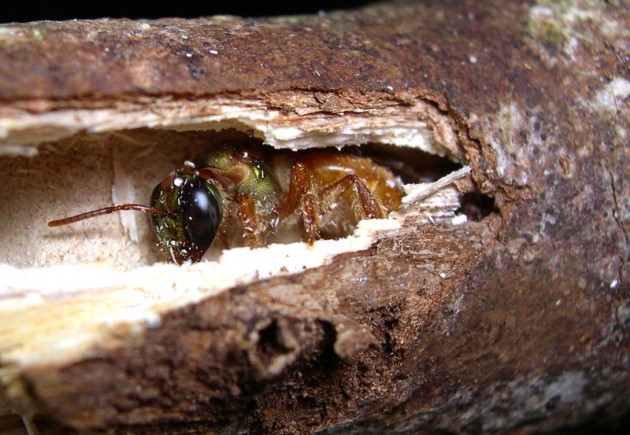
A tropical sweat bee, Megalopta genalisa, in her nest.
Females of the tropical sweat bee Megalopta genalisa exhibit a very primitive form of social behavior. Either a bee lives as a solitary queen, going out from her nest to forage for her own food, or she can be a social queen–a stay-at-home mom. In that case, one of her daughters goes out to forage for her. The daughter’s ovaries don’t develop, and she never leaves her mother to start her own colony.
Recently, scientists at the Smithsonian Tropical Research Institute in Panama discovered that the brain region responsible for learning and memory is larger in the social queens than in the solitary queens of this species. Their study is the first comparison of the brain sizes of social and non-social individuals of the same species.
“The idea is that to maintain power and control in groups you need more information, so the bigger the group, the bigger individuals’ brains need to be.” says William Wcislo, Smithsonian staff scientist.
“It was surprising to us that even though the social queens don’t have bigger brains overall, the fact that the area associated with learning and memory–the mushroom body–was more developed in the social queens than in the solitary bees suggesting that social interactions are cognitively challenging, as predicted by the social brain hypothesis,” said Adam Smith, postdoctoral fellow at STRI. “It’s interesting to see that a characteristic like brain development changes so immediately, even with this simple mother-daughter division of labor.”
This study was done in the Smithsonian Tropical Research Institute’s new insect neurobiology laboratory, built to take advantage of diverse tropical insect groups with a variety of brain sizes to understand how brain size and behavior are related
These results were published recently online in the journal Proceedings of the Royal Society B.





